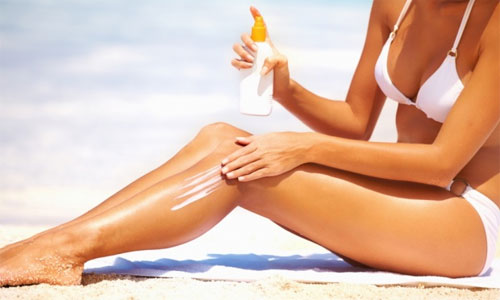Did you know how you apply sunscreen is more as important than as the SPF factor? It’s true. There is so much misinformation around sun protection, and the truth is it’s easy. A little effort can yield long-term benefits for your skin’s health and beauty.
After Vancouver’s long, wet winter, we know how good it is to feel the sun on the skin. That said, the sun is a leading cause of skin damage and some very dangerous cancers. Simple tips such as using a good sunblock aren’t a matter of vanity but vitality! As we live longer and longer, taking care of our hair, skin, and nails is a worthwhile investment. That’s why we’ve compiled a helpful list of some lesser-known tips to stay cool, healthy, and protected this summer.
1. Dress Sun Smart
We know shorts and tank tops are the defacto summer gear. People dress to minimize sweating, but in fact, light-coloured, loose-fitting long-sleeve tops and pants can maximize airflow to make the evaporative system of the body—sweat—work more effectively as a cooling mechanism. Plus, the clothing offers an additional layer of protection against the sun.
2. Invest in a good sunblock
Sunblock and sunscreen aren’t synonymous. There is a difference. Both are useful for protection but differ in how they protect the skin from UV damage. Sunscreen is a chemical blocker that absorbs UV light particles and converts them to heat. Sunblock reflects the light. In 2021, the FDA released a statement that only zinc oxide and titanium oxide were GRASE (generally recognized as safe and effective). We recommend physical blockers by a science-based brand like SkinCeuticals, whose Physical Fusion UV Defense was Allure’s 2013 Beast of Beauty Award Winner.
3. UPF Clothing
What is protective clothing? Typically, a hat and sunglasses come to mind, but many doctors recommend investing in clothing with Ultraviolet Protection Factor (UPF). Skin cancer is the most commonly diagnosed cancer in North America. UPF-rated clothing, hats, and sunglasses are available at many retailers now and can protect against sun-related UV damage.
4. Use Suncare Properly
We know there are a lot of cosmetic products at different price points—sometimes hundreds of dollars. The good news is these top shelf sunblockers aren’t necessary. A gentle cleanser, a moisturizer, and sun protection will cover the majority of your needs. The important thing is ensuring you get the right amount of the product on your skin. Most people underapply, which is why dermatologists recommend a higher SPF. Apply the equivalent of 2 tablespoons or a shot glass of sunscreen (Broad spectrum SPF 15+ or higher) to the exposed areas of the face and body at minimum. For the face and neck, use half a teaspoon. If you’re using a spray, apply until you get a glistening even sheen. Sticks should be applied to the area twice and massaged in. Reapply every 2 hours or more often if doing activities and toweling off.
5. Make it Personal
Your sun protection regiment should be built around your needs. For example, brown-eyed people are more susceptible to cataracts, so UPF glasses make good sense. A lot of people invest in sun protection due to outward factors—healthier, younger-looking skin for longer periods. However, the reality is that taking care of our skin and body is just another step to support a happy, healthy life.
If you want to discuss the right products for your skin or learn more about reversing skin damage, make an appointment with Dr. Kamani.
